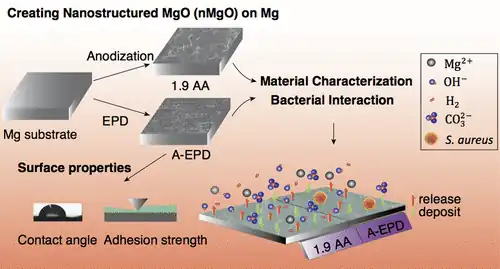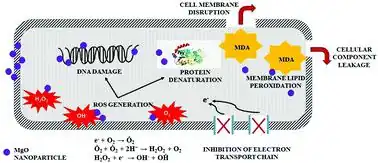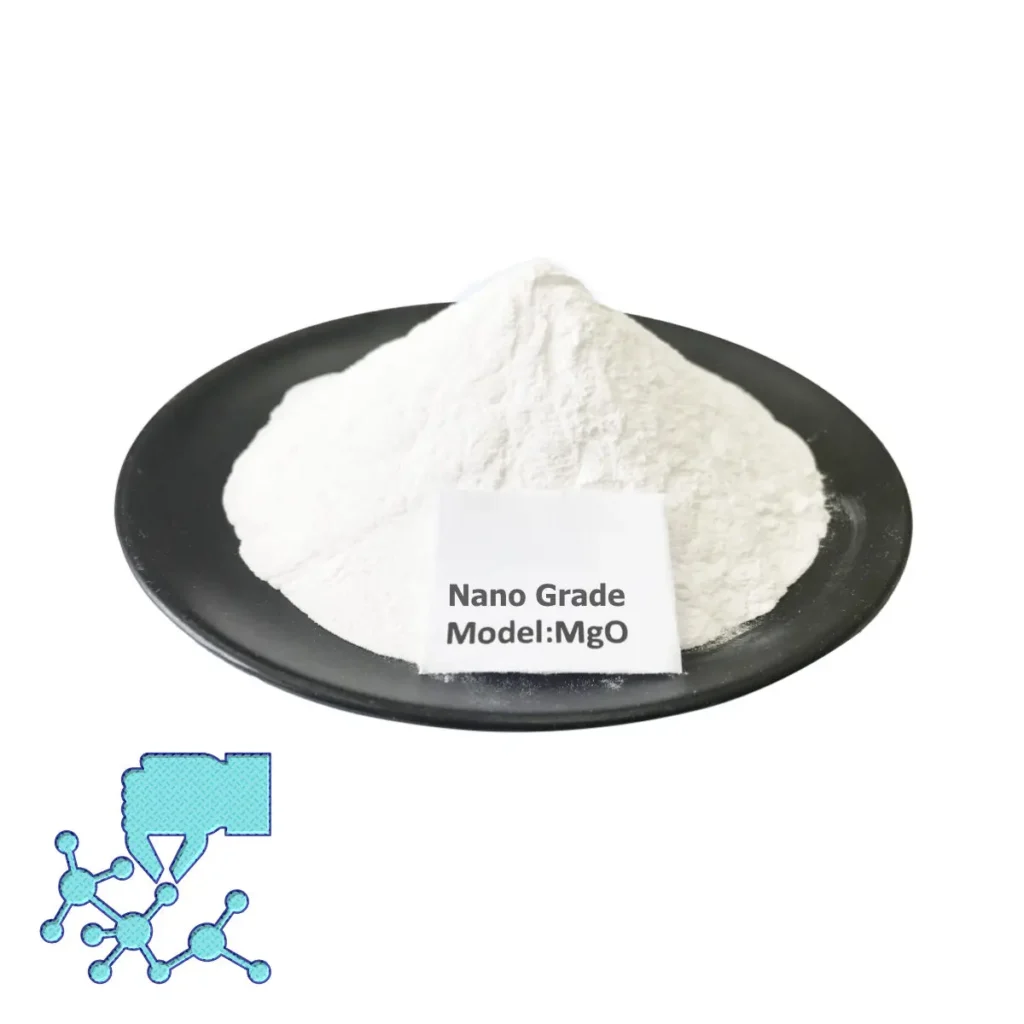Magnesium oxide is extremely easy to hydrate and forms a layer of magnesium hydroxide on its surface, where oxygen dissolved in solution generates reactive oxygen ions through a one electron reduction reaction. The surface of magnesium oxide is coated with a layer of hydroxide ions, due to the chemical stability of oxygen in alkaline environments, so a high concentration of reactive oxygen ions can exist on the surface of magnesium oxide. The active oxygen ions have strong oxidizing property, which can destroy the peptide bond structure of the cell membrane wall of the bacteria, thus killing the bacteria quickly.

In addition, the magnesium oxide nanoparticles can produce destructive adsorption, may also destroy the cell membrane of bacteria. This antibacterial mechanism can overcome the silver antibacterial agent slow action, easy to change color and titanium dioxide antibacterial agent need ultraviolet radiation shortcomings.
At present, there are two main paths for the development of magnesium oxide antimicrobial materials:

First, to improve the antimicrobial performance of magnesium oxide nanoparticles through the control of particle size and morphology characteristics. For example, scientists have successfully developed a scale like nano magnesium oxide powder, on anthrax, staphylococcus, coli and so on show very strong antibacterial sterilization ability.
Secondly, through the composite of magnesium oxide and other antimicrobial materials, the development of new composite antimicrobial materials. Mainly activated carbon / magnesium oxide, metal oxides / magnesium oxide and chlorine, bromine gas / magnesium oxide and so on.
The nanometer magnesium oxide powder is uniformly dispersed on the activated carbon matrix, which has good antibacterial properties against Staphylococcus aureus .
Chlorine gas and bromine gas of halogenated elements are strong bactericides, but they are highly toxic and have high vapor pressure and can’t be used alone, so we can use the strong adsorption effect on the surface of magnesium oxide to form a stable magnesium oxide/halogenated elements gas system, which can be used safely and efficiently.
In the metal oxide composite antimicrobial agent, with chemical co deposition method to prepare magnesium oxide / titanium dioxide composite powder, the study of its antimicrobial mechanism: titanium dioxide photocatalytic generation of electrons under the action of ultraviolet light, a cavity, but it is very easy to composite and lose photocatalytic and antimicrobial properties. There are defects on the surface of magnesium oxide electronic layer, which can accept electrons and holes, thus inhibiting the compounding of photogenerated electrons and holes, improving the photocatalytic efficiency and antibacterial properties.
In practice, nanometer magnesium oxide has important applications in the development of antibacterial ceramics, antibacterial plastics and other antibacterial materials.

